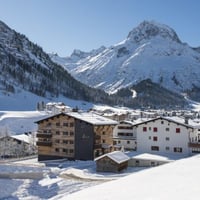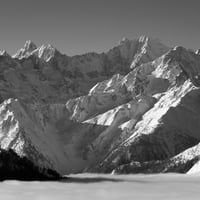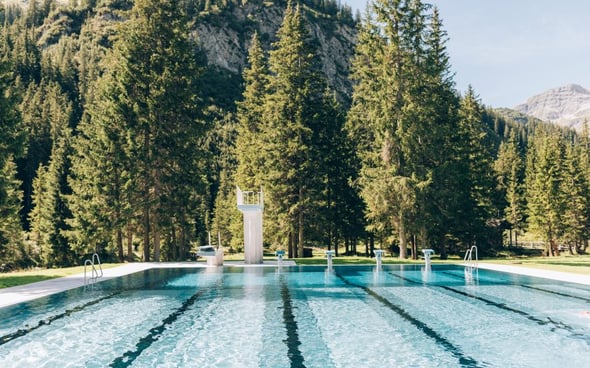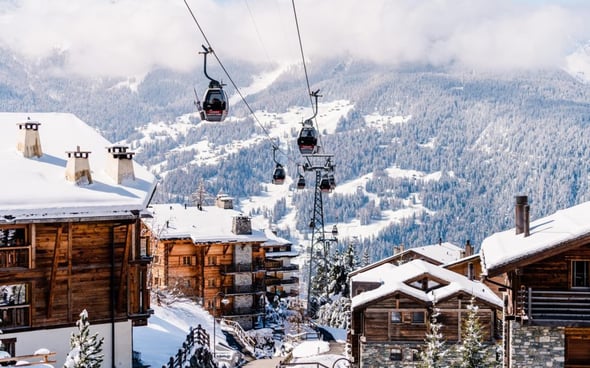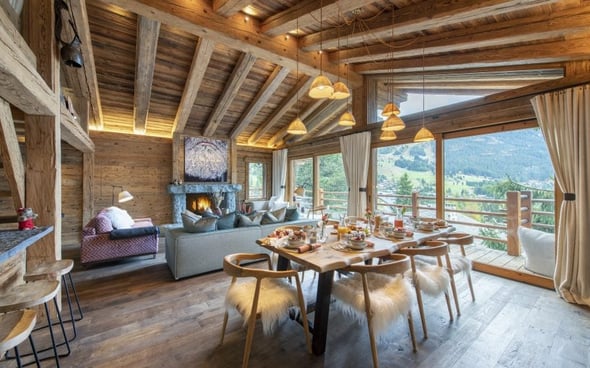How to descend the mountain like an elegant gazelle … Part 1
Following Zac’s list of his five favourite on-piste runs in the Four Valleys last week, this week we’re going to touch on the principles of good technique that will determine the difference between getting down these runs gracefully and with seemingly no effort at all, and getting down in survival mode grateful at the bottom that all bones are all still in check. Granted, either way the beer in après always tastes good. A friendly warning, though: the content of this blog is not recommended as conversational material over said beer.
At its core skiing/snowboarding is governed by the science of physics. So, if you have an analytical, pragmatic approach to life, dial into the follow principles and you are 33.3% of the way there. Understanding human dynamics and the design of the equipment constitutes the remainder of the science. And then, all you have to do is apply that knowledge with finely rehearsed skills that involve timing, co-ordination, reaction speed, and strength and fitness … and presto, grace will fall on you like a gazelle prancing across a dusty African plain.
Excuse the visual comparison but I am born and raised in Zimbabwe. Snowsports are not first nature to me. In fact, I first saw snow when I was 25! So, the act of sliding over snow has always been a little odd, albeit highly exhilarating. To survive I had to get analytical, so in this the first part on how to get down the mountain like, well an elegant gazelle, I’m going to look at a layman’s explanation of the physics of skiing. No formulas here, though, I promise!
We’re all so full of potential (yes, your mum was right), but when standing at the top of a slope, it’s the potential energy you’ve got to focus on. The moment you push off down the gradient, gravity acts on our mass and that potential energy begins to convert to kinetic energy. Gravity is the constant here. Embrace it, because there is no escaping it. But remember it has an impact in two planes or vectors.
The first plane of gravity acts parallel to the slope and is what pulls us forward and down the hill. The second plane of gravity acts perpendicular to the hill and opposes the direction of momentum down the hill. This is the friction between your skis and the snow. Think about this perpendicular gravity because it is the equal and opposite reaction of the downward force on the snow that determines how balanced we are and in which direction we go.
Are you with me?
Importance of Balance
Balance is key to controlling perpendicular gravity and executing perfect symmetrical turns. And to stay balanced you need to be aware of:
1) Your base of support and;
2) Your centre of mass.
To understand the base of support imagine that you are standing on a platform. On skis, this platform would be as long as the skis, and as wide as your feet are positioned. The further apart your feet, the wider your imaginary platform, the larger your base of support, and the more balanced you’ll be. A pole plant temporarily increases your base of support out to where the pole touches the snow.
Your centre of mass is that centre point in your body. In movement, this is a theoretical centre point that is always changing. When standing still you can imagine this to be around about at the belly-button. The lower your centre of mass the more balanced you are. And the more mass you carry, the more your friction on the snow increases.
So how do we apply the concepts above? For that gazelle, it’s all rather easy. He gracefully springs into the air and gravity pulls him back down to earth. He uses the laws of equal and opposite reaction back down on earth to spring back up, over and over again. Beautiful.
May the Force be with You
For us snow enthusiasts, however, and for the purposes of this particular topic, we’re imagining keeping our feet firmly on the ground. We’re looking to interpret the grace of the gazelle, not to copy it. What we want to do is deflect the force that we are imposing on the snow from one side to the other. This is known as centrifugal force and will change our direction of movement from going straight down the hill to steering across it. Carry on applying this centrifugal force in one direction and eventually, you will be moving against the directional pull of gravity and come to a stop. Presto, you have controlled the ever-present effect of gravity on your mass pulling you down the slope’s gradient.
If you can master these few principles of physics, you are well on your way to dominating the toughest pistes in the resort. But don’t take my word for it, go out skiing with our instructor concierges and they’ll have you conquering these slopes in elegant and effortless form. Just don’t try and talk physics with your group at lunch time or over a beer at the end of the day, you may have them nodding off to sleep.
In part 2 of descending the mountain like an elegant gazelle, I’ll touch on the biodynamics involved with skiing. Gripping!
